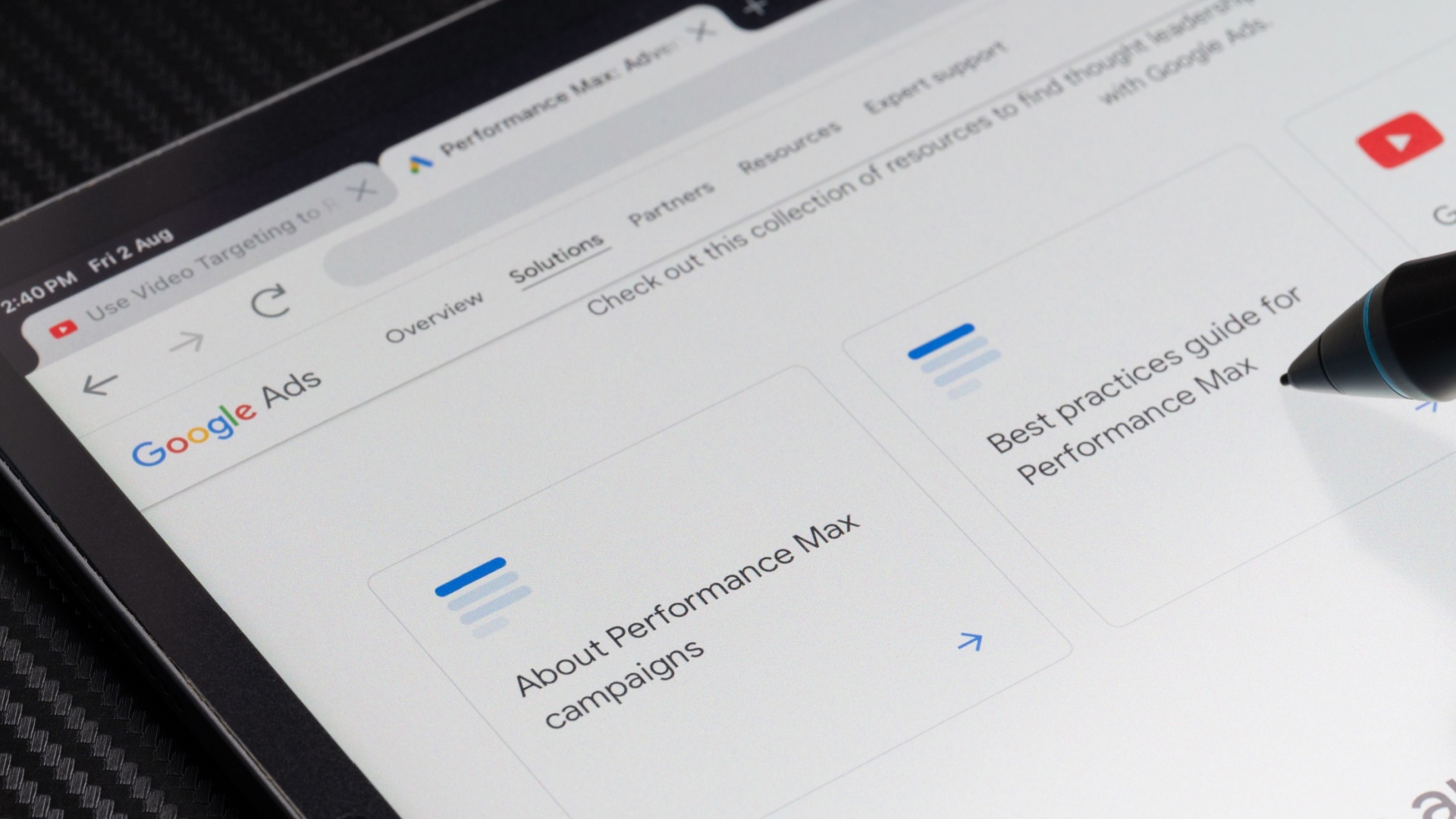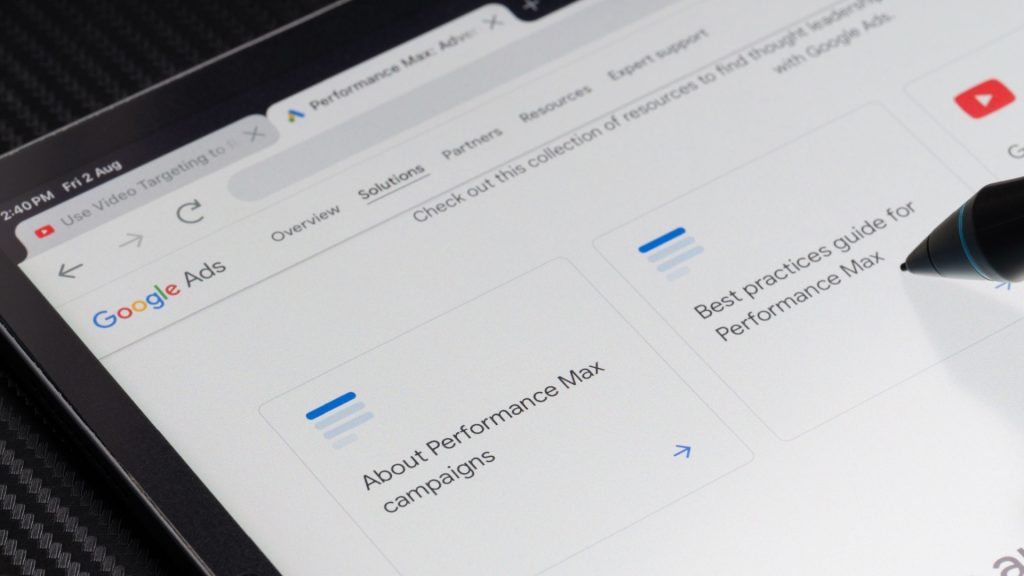Top Performance Max optimization tips for 2026

Performance Max has evolved dramatically since its 2021 launch.
If you’re still running campaigns like it’s 2023, you’re leaving serious performance gains behind.
With Google rolling out enhanced reporting and creative controls this year, the optimization playbook looks very different heading into 2026.
These strategies will help you maximize Performance Max in Q4 and beyond – whether your goal is lead generation or ecommerce growth.
Before diving in, remember: Performance Max requires historical data to succeed.
Aim for at least 30-50 conversions per month, with established Search campaigns already running. It works best as a complement to – not a replacement for – your core campaigns.
4 pillars of Performance Max success
It’s crucial to understand the four core optimization areas that have proven most effective:
- Budget control and segmentation: Control where Google allocates your budget across different products or service categories.
- Audience and keyword targeting: Manage keywords, audiences, demographics, locations, and devices that trigger your ads.
- Creative assets and landing pages: Optimize creative assets and destination pages for maximum conversion.
- Smart Bidding strategies: Leverage automated bidding effectively while maintaining control. Choose Target ROAS when you have consistent conversion values and sufficient data, or Maximize Conversions when building initial volume with at least 30 conversions per month.
This structured approach helps solve the distinct challenges of optimizing Performance Max.
The 5-minute Performance Max health check
Every week, run through these five diagnostic questions to catch issues before they become expensive problems:
- Is my spend distribution above 80/20 (80% going to top 20% of products/asset groups)?
- Have any placements exceeded 15% of total spend?
- Are my best performing assets from auto-generation or uploaded?
- Did my Search campaign CPCs increase after launching Performance Max?
- Am I seeing conversions from unexpected geographic locations?
- Are more than 30% of my conversions coming from brand terms despite exclusions?
- Has my asset group performance rating dropped below “Good” for more than 7 days?
If you answer “yes” to two or more, immediate optimization is needed.
Use this framework to know when to optimize versus when to trust the algorithm.
Tailored strategies for different campaign goals and industries
For lead gen campaigns
In lead generation, businesses that see strong results use Performance Max as a customer acquisition engine.
The key is bidding exclusively on new customers while applying comprehensive brand exclusions, ensuring campaigns complement rather than compete with Search.
Proper segmentation has driven significant cost-per-conversion improvements.
Instead of oversegmenting, focus on a few high-quality asset groups.
While some advertisers test different messaging angles across asset groups, Google recommends consolidation to give the algorithm more flexibility and data.
This level of granular control wasn’t available in earlier versions of Performance Max but is now essential for optimization.
Dig deeper: How to use Performance Max for high-value customer acquisition and retention
For ecommerce campaigns
For ecommerce campaigns, brands face unique challenges with Performance Max, especially when managing large product catalogs.
A common issue is uneven spend distribution:
- Some products get no impressions despite strong potential.
- Others convert well but receive little budget relative to their performance.
Google recommends campaign consolidation for optimal machine learning.
But many advertisers find success segmenting high-volume categories into separate campaigns.
Test both approaches – consolidated vs. segmented – to see what fits your catalog and budget.
Strategic segmentation forces Google to allocate spend to overlooked product groups, helping brands scale profitable products that previously received minimal impressions.
When implemented correctly, this structure can unlock significant growth while maintaining efficiency targets.
Ecommerce success with Performance Max also depends on feed optimization.
- Product titles should include key attributes like brand, product type, and features.
- Use custom labels to segment by margin, seasonality, or performance tiers.
These optimizations give Performance Max stronger signals to match products with relevant searches.
Industry-specific considerations
Different industries require distinct approaches to Performance Max optimization in 2025:
B2B services
- Focus on URL exclusions to prevent budget waste on blog posts and informational content.
- Prioritize high-intent landing pages that align with bottom-funnel search behavior.
Retail
- Leverage Google’s enhanced asset testing capabilities introduced in 2025.
- Retail campaigns benefit significantly from the new image optimization features that automatically enhance product imagery.
Healthcare and professional services
- Implement geographic targeting and scheduling adjustments.
- These industries often see better performance with conservative audience signals rather than broad targeting.
Travel and hospitality
- Take advantage of Performance Max’s new channel performance reporting to understand which networks drive bookings versus research behavior.
Leveraging PMax’s latest game-changing features
Enhanced search term visibility
One of the biggest 2025 improvements was expanded search term reporting.
Advertisers can now spot and exclude irrelevant queries that were previously hidden.
Access this data through predefined Google Ads reports, focusing on terms with high spend but low conversions.
Advanced creative controls
Google’s recent updates also introduced greater control over creative assets.
While Performance Max still auto-generates headlines, advertisers now see performance data at the asset level.
Track conversion rates and click-throughs for individual headlines, but remember: machine learning often creates combinations you didn’t provide directly.
Dig deeper: Google’s image optimization features for Performance Max
Negative keyword implementation
With expanded negative keyword limits rolled out, advertisers can now implement more comprehensive exclusion lists.
This capability is valuable for brands wanting to separate brand and non-brand traffic between Performance Max and traditional search campaigns.
Get the newsletter search marketers rely on.
See terms.
5 critical PMax optimization tactics for 2026
1. Master URL exclusions
Landing page analysis is now critical for Performance Max success.
Use the predefined landing page report to identify pages that spend budget without driving conversions.
Common culprits include:
- Blog posts.
- Career pages.
- Other informational content that attracts top-funnel traffic.
That said, test what works for your business.
Some advertisers see strong results from blog traffic via remarketing, and exclusions can limit the algorithm’s ability to find converters.
To apply exclusions, go to Campaign settings > Asset optimization, then add URL exclusions under the text section.
This simple adjustment often delivers immediate improvements in cost per conversion.
2. Test your campaign structure
While Google recommends consolidated campaigns for better machine learning, test what works for your account.
Consider these segmentation options if your budget and conversion volume support multiple campaigns:
For ecommerce brands:
- Product categories or profit margins.
- Customer lifetime value tiers.
- Seasonal product demand patterns.
- Best-selling vs. long-tail products.
For lead gen:
- Service categories or keyword themes.
- Lead quality tiers (enterprise vs. SMB).
- Geographic service areas.
- Conversion actions (form fills vs. phone calls).
This segmentation provides greater control over budget allocation and allows for more targeted optimization strategies.
3. Optimize asset groups ruthlessly
Monitor asset group performance weekly, keeping the 2-3 week learning period in mind.
Look for groups with:
- Spend but no conversions.
- Declining performance over 30 days.
- Cannibalizing traffic from stronger performers.
Pause or restructure weak groups so budget flows to proven performers.
4. Refresh creative assets regularly
Test and rotate your creative elements to combat ad fatigue and improve performance:
Headlines and descriptions
- Review asset performance metrics weekly in your asset group’s View details section.
- Replace headlines marked as Low performance after 14 days of data.
- Test different value propositions – promotional vs. feature-focused vs. benefit-driven.
- Maintain at least 10-15 headlines for optimal rotation.
Images and videos
- Swap out underperforming images monthly.
- Test lifestyle imagery vs. product-only shots (for ecommerce).
- Add seasonal creative before peak periods.
- Leverage Google’s image optimization features to auto-enhance existing assets.
When to update
- Any asset with Low performance rating after sufficient impressions.
- When CTR drops below the account average for two consecutive weeks.
- Before major sales periods or seasonal shifts.
- When launching new products or services.
Because Performance Max auto-generates combinations, supplying diverse, high-quality assets ensures more winning variations.
5. Leverage audience signals strategically
While Performance Max uses audience signals as suggestions rather than strict targeting, providing high-quality signals significantly impacts campaign performance. Focus on:
- Customer match lists for similar audience modeling.
- High-intent in-market audiences relevant to your offerings.
- Custom segments based on search behavior and website interactions.
Dig deeper: Auditing the Performance Max black box: A strategic approach
Common PMax pitfalls to avoid in 2026
Over-optimization
PMax campaigns require patience.
- Avoid making frequent changes, as the algorithm needs time to learn and optimize.
- Limit major adjustments to once every two weeks unless addressing critical issues.
- Don’t ignore cross-campaign cannibalization. Performance Max can pull traffic from your other campaigns, especially brand search terms.
- Even with brand exclusions, monitor your Search campaign performance after launching Performance Max.
- Add campaign-level negative keywords to your Search and Shopping campaigns to protect Performance Max from internal competition.
Neglecting traditional campaigns
Performance Max should complement your search and shopping campaigns.
Many marketers report Performance Max performing better when it’s the only campaign type running, avoiding internal competition.
Ignoring creative quality
Despite automation capabilities, creative quality remains paramount.
Sitelinks now factor into Performance Max ad strength, making comprehensive creative optimization more important than ever.
Measuring PMax success
Focus on these metrics when evaluating Performance Max performance:
- New customer acquisition rate: Essential for understanding incremental value.
- Asset group efficiency: Cost per conversion by asset group.
- Channel performance: Leverage new reporting to understand cross-network performance.
- Incrementality: Compare Performance Max results against baseline campaign performance.
Looking ahead: The future of Performance Max
Performance Max will keep evolving through 2026, with new API updates hinting at finer audience targeting and better conversion tracking.
The campaigns winning now are those that embrace automation while maintaining control through smart structure and segmentation.
Success in 2026 requires more than past playbooks.
Focus on budget control, targeting, creative, and bidding aligned to your model.
Performance Max isn’t set-and-forget. It demands steady monitoring, testing, and data-driven adjustments to deliver lasting results.







Recent Comments